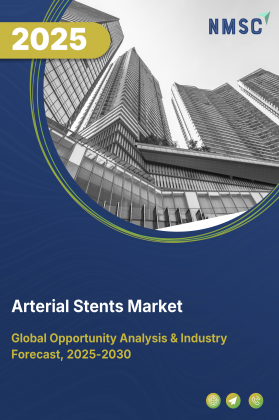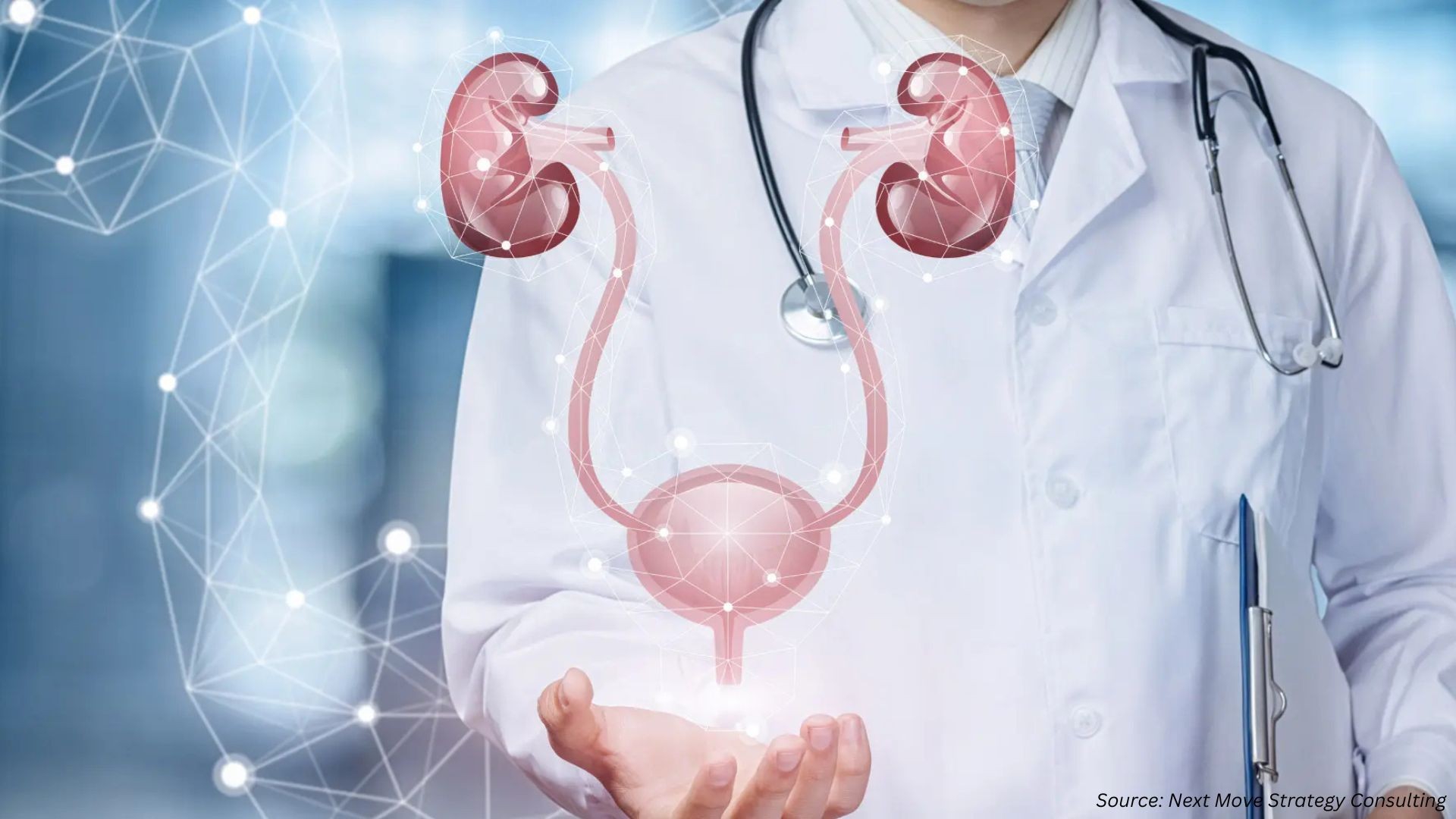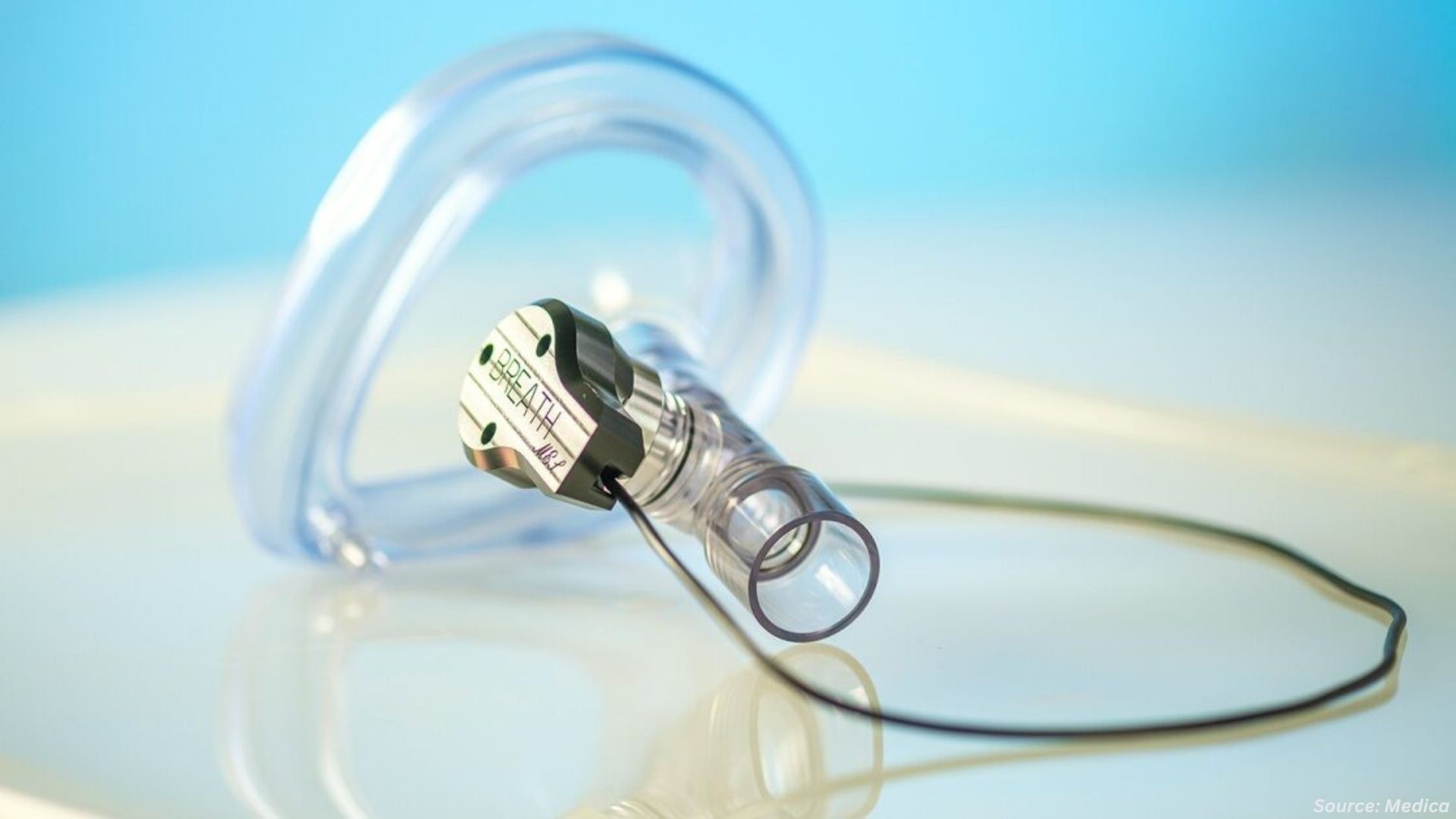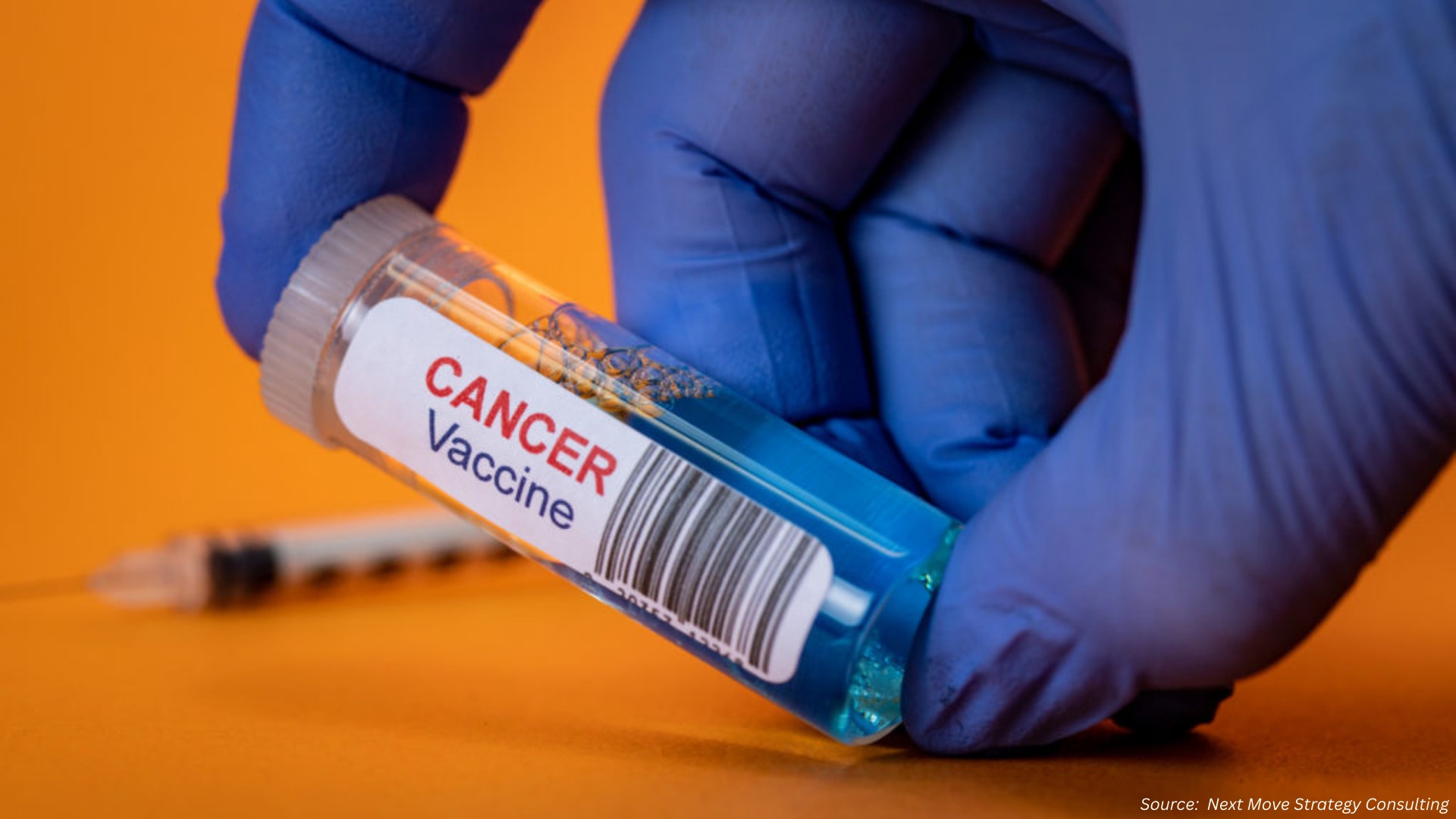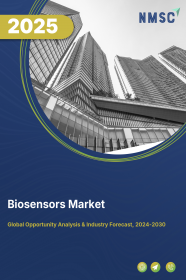
Biosensors Market by Type (Sensor Patch, aqnd Embedded Device), by Component (Biorecognition Elements, Transducers, and Signal Processing & Display Units), by Technology (Electrochemical Biosensors, Optical Biosensors, and others), by Application (Medical Applications, and Non-Medical Applications), by Product Type (Wearable Biosensors, and Non-Wearable Biosensors), by End User (Hospitals & Diagnostic Laboratories, and others)- Global Opportunity Analysis and Industry Forecast 2024-2030.
Market Overview
The global Biosensors Market size was valued at USD 27.15 billion in 2023 and is predicted to reach USD 48.66 billion by 2030 with a CAGR of 8.7% from 2023-2030. A biosensor is an analytical device that is primarily used to detect the presence of a chemical or biological substance such as a biomolecule or microorganism. It converts biological reactions into electrical signals.
A biosensor consists of three main parts, including the component that identifies the analyte, generates a signal & the signal transducer as well as the reader device. Biosensors enable easy detection of harmful chemicals or biological agents inside a human body and then convert the biological signals into electrical signal that can be easily measured, quantified and amplified. These devices are very smaller in size, cost-effective, reliable and highly specific for the analyte.
Market Dynamics and Trends
Increasing demand for wide range of home care medical devices due to the growing prevalence of chronic diseases such as diabetes, respiratory disease and heart diseases globally is driving the growth of biosensors market. Also, growing advancements in wearable biosensors that provides highly sensitive electrochemical analysis, which enhances ECG, heart rate and EEG measurement is expected to further propel the growth of biosensors market.
Moreover, growing application of biosensors in the food industry due to high demand for food quality control process, which helps to measure carbohydrates, alcohols and acid is driving the market. In addition, biosensors are also used in the detection of pathogens in fresh meat, poultry and fish around the world, which is further expected to drive the growth of biosensors during the forecast period.
However, high cost involved in the research &development of biosensors and lack of inclination towards adoption of new treatment devices are the factors which restrain the growth of market during the forecast period. On the contrary, growing advancements in biosensors that has led to the development of micro-analytical device that enables to measure for diagnostics, environmental monitoring and agriculture across countries is expected to create ample growth opportunities for the market in the coming years.
Market Segmentations and Scope of the Study
The biosensors market share is segmented on the basis of type, products, technology, application, end user, and geography. On the basis of type, the market is divided into sensor patch and embedded device. On the basis of products, the market is classified into wearable biosensors and non-wearable biosensors. Wearable biosensors are further sub-classified into wristwear, eyewear, footwear, neckwear, bodywear, and others. On the basis of technology, the market is categorized into electrochemical biosensors, optical biosensors, piezoelectric biosensors, thermal biosensors, nanomechanical biosensors, and others. Electrochemical biosensors are further sub categorized into amperometric sensors, blood glucose sensors, potentiometric sensors, immunosensors, and conductometric sensors. Optical biosensors are further sub categorized into surface plasmon resonance (SPR), calorimetric biosensors, and fluorescence biosensors. Piezoelectric biosensors are further sub divided into acoustic biosensors and microcantilever biosensors. On the basis of application, the market is bifurcated into medical diagnostics, environmental monitoring, food & beverages, industrial process control, agricultural testing, and others. Medical diagnostic is further sub bifurcated into glucose monitoring, cardiac markers, infectious diseases, coagulation monitoring, pregnancy & fertility testing, blood gas & electrolytes, tumor or cancer markers, urinalysis testing, cholesterol tests, and others. On the basis of end user, the market is segmented into point of care testing, home healthcare diagnostics, research laboratories, security & bio-defense, and others. Geographic breakdown and analysis of each of the aforesaid segments include regions comprising of North America, Europe, Asia-Pacific, and RoW.
Geographical Analysis
North America holds the major share of biosensors market at present and is expected to continue its dominance during the forecast period. This is attributed to increasing adoption of biosensors in the industries and enterprises due to the improved monitoring services to produce quality industrial products in this region.For instance, in May 2022, Sentry, a Canadian start-up, announced partnership with Aqualia that enables biosensors for wastewater monitoring. It also helps in real-time monitoring of organic content in water for treatment.
Also, presence of major key players such as Abbott, Bio-Rad Laboratories, Inc, Dexcom, Inc. and Masimo that are launching new products to expand their businesses boosts the market growth in this region. For instance, in April 2022, Dexcom launched a new glucose monitoring system, Dexcom ONE, a wearable sensor and transmitter to control diabetes. It provides continuous monitoring glucose levels and sends real-time values wirelessly to a smart device through the Dexcom ONE mobile app, which eliminates the need for painful finger pricks.
On the other hand, Asia-Pacific is expected to show a steady rise in the biosensors market due to the growing government initiatives and regulations for biotechnological sector and researchers in this region. For instance, in May 2022, Union Minister of India launched single national portal, Biological Research Regulatory Approval Portal (BioRRAP) for biotech researchers and start-ups. The Portal BioRRAP caters to seek regulatory approval required for biological research and development activity in the country.
Moreover, increasing diabetic population in these region leads to increased adoption of medical home devices among households, which are expected to drive the biosensors market growth in this region. According to the World Bank data for 2021, the growing prevalence of diabetes for population age between 20 to 79 is reported at 10.6 % in China.
Competitive Landscape
Various market players operating in the biosensor market includes Abbott Laboratories, F. Hoffmann‑La Roche Ltd., Medtronic, Dexcom Inc., LifeScan (IP Holdings), Nova Biomedical, Universal Biosensors, Biosensors International Group Ltd., Bio‑Rad Laboratories Inc., Masimo, DuPont, ACON Laboratories, and Others. These market players are adopting various strategies such as partnership and launch of new products across various regions to maintain their dominance in the biosensors market.
For instance, in April 2025, Abbott Laboratories, announced the company announced a US $500 million investment to enhance U.S. manufacturing and R&D operations for glucose monitoring devices. Abbott also emphasized its focus on metabolic health tracking with the Lingo platform, expanding beyond traditional diabetes care.
Moreover, in July 2025, LifeScan (IP Holdings) LLC,announced a restructuring agreement and filed for Chapter 11 bankruptcy protection to reduce its debt by over 75%, aiming to stabilize operations and continue strategic investments. The company stated that international subsidiaries would continue normal operations outside the restructuring process.
Key Benefits
-
The biosensors market report provides the quantitative analysis of the current market and estimations from 2022 to 2030. This analysis assists in identifying the prevailing market opportunities to capitalize on.
-
The study comprises of a detailed analysis of the biosensors market trends including the current and future trends for depicting the prevalent investment pockets in the market.
-
The information related to key drivers, restraints, and opportunities and their impact on the biosensors market is provided in the report.
-
The competitive analysis of the market players along with their market share in the payer biosensors is mentioned.
-
The SWOT analysis and Porter’s Five Forces model are elaborated in the study.
-
The value chain analysis in the market study provides a clear picture of the stakeholders’ roles.
Key Market Segments
By Type
-
Sensor Patch
-
Embedded Device
By Component
-
Biorecognition Elements
-
Transducers
-
Signal Processing & Display Units
By Technology
-
Electrochemical Biosensors
-
Amperometric Sensors
-
Potentiometric Sensors
-
Conductometric Sensors
-
-
Optical Biosensors
-
SPR Biosensors
-
Colorimetric Biosensors
-
Fluorescence Biosensors
-
-
Piezoelectric Biosensors
-
Acoustic Biosensors
-
Microcantilever Biosensors
-
-
Thermal Biosensors
-
Nanomechanical Biosensors
By Application
-
Medical Applications
-
Point-of-Care Testing (POCT)
-
Blood Glucose Monitoring
-
Cardiac Biomarker Testing
-
Infectious Disease Testing
-
Coagulation Monitoring
-
Pregnancy & Fertility Testing
-
Blood Gas & Electrolyte Analysis
-
-
Home Diagnostics
-
Therapeutic Monitoring
-
Non-Medical Applications
-
Food & Beverage Industry
-
Biodefense & Environmental Monitoring
-
-
-
Agriculture & Livestock Industry
By Product Type
-
Wearable Biosensors
-
Wristwear
-
Eyewear
-
Footwear
-
Neckwear
-
Bodywear
-
Others
-
-
Non-Wearable Biosensors
By End User
-
Hospitals & Diagnostic Laboratories
-
Home Care Settings / Individuals
-
Academic & Research Institutes
-
Food & Beverage Companies
-
Environmental Protection Agencies
-
Biotechnology & Pharmaceutical Companies
By Geography
-
North America
-
U.S
-
Canada
-
Mexico
-
-
Europe
-
Germany
-
France
-
Italy
-
Spain
-
United Kingdom
-
Russia
-
Sweden
-
Rest of Europe
-
-
Asia-Pacific
-
Australia
-
China
-
India
-
Japan
-
South Korea
-
Indonesia
-
Singapore
-
Rest of Asia-Pacific
-
-
RoW
-
UAE
-
Brazil
-
South Africa
-
Israel
-
KSA (Kingdom of Saudi Arabia)
-
Turkey
-
Remaining Countries
-
Key Players
-
Abbott Laboratories
-
F. Hoffmann‑La Roche Ltd.
-
Medtronic
-
Dexcom Inc.
-
LifeScan (IP Holdings)
-
Nova Biomedical
-
Universal Biosensors
-
Biosensors International Group Ltd.
-
Bio‑Rad Laboratories Inc.
-
Masimo
-
DuPont
-
ACON Laboratories

















 Speak to Our Analyst
Speak to Our Analyst





